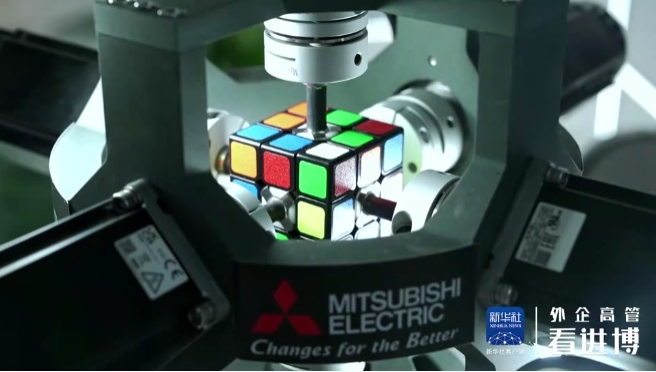Beru f1systems' infrared sensor, DigiTyre IR, measures tire-carcass temperature. Used for racecar tire tes¬ting, it could also find applications within road-tire test programs.
Achieving accurate tire-carcass temperature measurement is a problem because other components and systems may distort readings.
But now Beru f1systems has revealed details of a new infrared (IR) sensor called DigiTyre IR that it claims can record accurate tire-carcass temperature, avoiding the effects of heat soak from the wheel rim and brakes. It also records air pressure and temperature.
Most tire-temperature sensors are fitted to the rim as part of the valve that risks being affected by heat soak from other sources, said Managing Director John Bailey.
"However, our new system uses IR sensors to measure the inside temperature of the tire carcass itself, not just air temperature. Engineers will now be able to correlate accurate tire-carcass temperature to wear, traction, and loading. This inside measurement is key as it identifies the true tire temperature, not just the surface that is in contact with the road."
The system has been used for tire testing by two Formula One race teams and is expected to be used by others, said Bailey. It is set to be used in races from 2009 when slick tires are introduced and testing is dramatically reduced. It could also find applications for road tire testing and development.
The earliest possible warning to a race driver—and vehicle monitoring team—of imminent tire deflation is a crucial issue, and information about the tire-carcass temperature could help to identify tire deflation more quickly.
"There is a chain of events when a tire deflates," explained Bailey. "If a tire develops a puncture, tire and air temperatures rise, with a short lag between the two. Traditional systems only measure air temperature; our new system will receive data about changes to the carcass temperature, so a puncture can be identified earlier."
He added that DigiTyre IR offers resolution of 0.25ºC (0.45°F) and accuracy of 0.5ºC (0.9°F) across an extended temperature range of -40ºC to +215ºC (-40°F to +419°F).
The wheel sensor transmits pressure, air, and tire temperature at 1 Hz, via antennae to the ECU. Existing Beru f1systems’ customers can upgrade their existing TPMS with new wheel electronics and software.
The system is also compatible with CAN bus, simplifying integration to loggers. The sensor includes an LF (low-frequency) receiver, allowing engineers using remote devices to receive data. The receiver also allows tire temperature and pressure to be monitored when wheels are being checked on dynamometers or test beds.
"DigiTyre IR is expected to appeal to motorsport users where cost-cutting measures and changes to technical regulations are posing new engineering challenges," said Bailey.
Changing F1 rules for 2009 means a very significant reduction in F1 testing together with the introduction of slick tires, driving demand for trusted data.
The new system was checked out by F1 teams in the first winter tests for the 2009 season as teams gained experience with slick tires.
"Engineers are discovering the new tires, which are the same width as outgoing grooved tires, are generating lots of front-end grip. With more data, they will be better armed to make setup decisions," stated Bailey.
"Testing reductions make track time valuable and engineers will want to acquire as much knowledge as possible."
Other scheduled F1 rule changes will affect tires. For 2010, they will include a ban on tire warmers (blankets used to preheat the tires), which will make the new sensor particularly relevant as race engineers require trusted data to help achieve the best possible qualifying and race performance.
Beru f1systems的红外传感器——DigiTyre IR可以测量轮胎胎体温度。它用于赛车轮胎测试中,但也可以用于常用汽车的轮胎测试中。
测量轮胎胎体温度的精确性是一个难点,因为除轮胎外的其它部件和系统可能会影响传感器的读数。
但是现在,Beru f1systems揭示了其新型红外传感器DigiTyre IR的一些细节,据称该传感器可以避免轮辋和制动器的热浸效应,能够记录下准确的轮胎胎体温度。它同时也可记录充气压力和充气温度。
大多数的轮胎温度传感器都是作为阀体的一部分装在轮辋上,这可能会受到其它热源的影响,Beru f1systems的执行总监John Bailey称。
“然而,我们新推出的红外传感器不仅仅测量充气温度,还直接测量轮胎胎体的内部温度。有了它,工程师现在可以分析胎体温度和轮胎磨损、抓地力以及载荷之间的相互关系了。这种内部温度的测试十分关键,因为该传感器测量的是真实的轮胎温度,而不是轮胎与路面接触面的温度。”
Bailey说,该系统现已被两家F1车队应用于轮胎测试,并且有望得到其它车队的采用。它很有可能在2009年被采用,那时F1比赛采用热熔胎,可以大幅降低轮胎的测试工作。它同样可以用于常规车辆的轮胎测试和开发中。
对于赛车手及其车辆状态监测工作组而言,尽早地提示胎压不足十分重要,而胎体温度信息有助于更快地发现胎压不足。
Bailey解释说,“当轮胎气压不足时,会有一连串的反应。当轮胎扎破后,轮胎和充气温度相继升高,而两者升温之间有一个时间延迟。传统的测试系统只检测充气温度,我们的新系统则会获得胎体温度的变化数据,因此扎胎可以更早的被发现。”
他补充说,DigiTyre IR系统的分辨率达0.25ºC (0.45°F),在-40ºC~+215ºC (-40°F~+419°F)的温度范围内,其精度可达0.5ºC (0.9°F)。
该传感器通过天线以1Hz的频率发送气压、充气温度以及胎体温度信息。Beru f1systems的老客户可用新的车轮电子系统和软件对他们的现有TPMS(胎压监测系统)进行升级。
该系统也与CAN总线兼容,这使得其与数据记录器的集成更简便。该传感器包括一个低频接收器,允许工程师采用远程设备来接收数据。当在测功机或测试台架上检测车轮时,该接收器同样允许监测胎体温度和胎压。
Bailey说,“赛车运动中的削减开支措施和技术规则的变化都是新的工程挑战,而DigiTyre IR系统将有望吸引到这些赛车用户。”
2009 F1赛季规则的变化意味着F1测试将得到大幅削减,而且将使用热熔胎,这对可靠的数据测试提出了更高的要求。
该新系统已经在2009F1赛季的第一轮冬季测试中通过了检验,在该测试中车队对热熔胎有了一定的经验。
Bailey说,“工程师们在不断地认识新轮胎,该轮胎与以往的有纹轮胎宽度相同,可产生较大的前端抓地力。有了更多的数据,工程师就可更好地进行赛车设置。”
“测试开支的减少使得单圈耗时更显宝贵,工程师们想获得尽可能多的了解。”
F1规则的其它预定变化会影响到轮胎。到2010赛季,规则将禁止使用轮胎加热器(预热轮胎用的加热毯),这将使DigiTyre IR传感器更显必要,因为赛车工程师们需要可靠的数据来获得可能的最好赛车性能和比赛成绩。
(转载)





